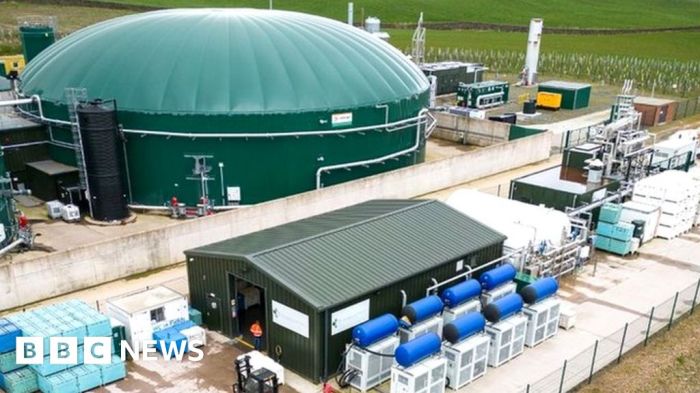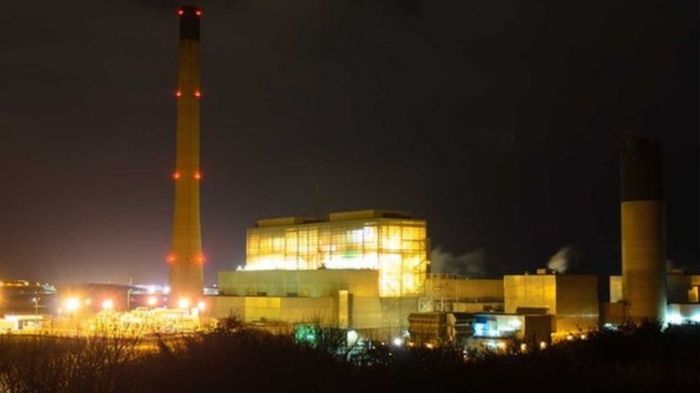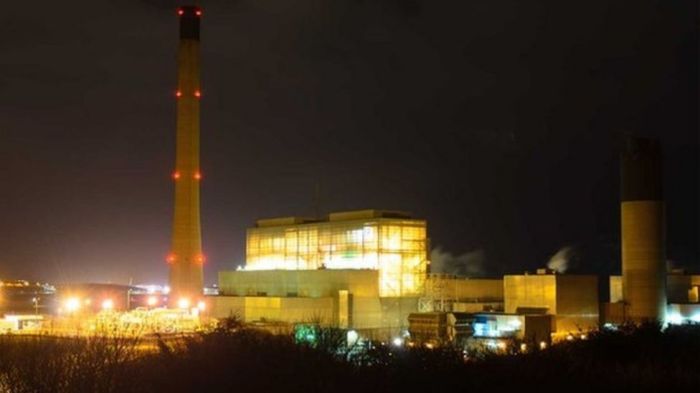UK startup Seabound carbon capture shipping is leading the charge in the fight against climate change by revolutionizing the shipping industry. Seabound’s innovative technology captures carbon dioxide emissions directly from ships, offering a sustainable solution to reduce the industry’s significant carbon footprint.
This innovative approach not only addresses environmental concerns but also presents a compelling economic opportunity. Seabound’s technology has the potential to create new jobs, stimulate growth in the green technology sector, and drive a shift towards sustainable shipping practices. As Seabound scales its operations, it aims to become a global leader in carbon capture technology, paving the way for a cleaner and more sustainable future for the shipping industry.
The UK Startup Landscape and Carbon Capture
The UK boasts a thriving startup ecosystem, particularly in the realm of sustainability and green technologies. This dynamic environment is fueled by a growing awareness of climate change and a commitment to achieving net-zero emissions. Within this landscape, carbon capture technology plays a crucial role in addressing the challenges posed by greenhouse gas emissions, particularly in the shipping industry.
Carbon Capture’s Role in Combating Climate Change
Carbon capture technology is essential in mitigating climate change by removing carbon dioxide (CO2) from the atmosphere or directly from industrial emissions. This technology offers a promising solution to reduce greenhouse gas concentrations, thereby limiting global warming. The shipping industry, a significant contributor to CO2 emissions, stands to benefit greatly from carbon capture solutions.
Challenges and Opportunities for UK Startups
The UK’s startup ecosystem is well-positioned to develop innovative carbon capture solutions for the shipping industry. However, several challenges and opportunities exist for these startups:
Challenges
- Technological Development:Carbon capture technologies are still under development, requiring significant investment in research and development to improve their efficiency and cost-effectiveness.
- Scalability:Scaling up carbon capture technologies to meet the demands of the global shipping industry presents a major challenge.
- Cost:The high cost of carbon capture technology remains a barrier to widespread adoption, particularly for smaller shipping companies.
- Regulation and Policy:Clear and consistent regulatory frameworks and policies are crucial to encourage investment in carbon capture technologies and ensure their responsible deployment.
Opportunities
- Government Support:The UK government has committed to supporting the development and deployment of carbon capture technologies, including providing funding and incentives.
- Investor Interest:The growing awareness of climate change has attracted significant investor interest in sustainable technologies, including carbon capture.
- Innovation Hubs:The UK is home to numerous innovation hubs and research centers focused on developing clean technologies, providing a fertile ground for startups.
- Collaboration:Collaboration between startups, established companies, and research institutions is crucial to accelerate the development and deployment of carbon capture technologies.
The UK Startup Landscape and Carbon Capture in Shipping
The UK’s startup landscape is brimming with innovative companies developing carbon capture solutions for the shipping industry. These startups are leveraging advanced technologies, such as membrane-based capture, direct air capture, and electrochemical capture, to address the challenges of CO2 emissions from ships.
Examples of UK Startups
- [Startup Name]:This startup is developing a novel carbon capture technology that utilizes [describe the technology and its unique features].
- [Startup Name]:This company is focused on [describe the startup’s mission and the technology they are developing].
The Future of Carbon Capture in Shipping
Carbon capture technology is poised to play a pivotal role in the future of shipping. As the industry seeks to reduce its environmental impact, carbon capture solutions will be increasingly essential for achieving net-zero emissions. The UK’s startup ecosystem is well-positioned to lead the way in developing and deploying these technologies, contributing to a more sustainable future for shipping.
You also can investigate more thoroughly about what you need to know about aiops to enhance your awareness in the field of what you need to know about aiops.
Seabound
Seabound is a UK-based startup that has emerged as a frontrunner in the burgeoning field of carbon capture technology, specifically focusing on the maritime sector. Their mission is to reduce the carbon footprint of shipping, a significant contributor to global emissions, by developing and deploying innovative carbon capture solutions.
Seabound’s vision is to create a future where shipping operates sustainably, minimizing its environmental impact.
Seabound’s Carbon Capture Technology
Seabound’s core technology is based on a unique and efficient approach to capturing carbon dioxide (CO2) directly from the exhaust gases of ships. Their system utilizes a specialized amine-based sorbent material that effectively binds with CO2, removing it from the exhaust stream.
This captured CO2 is then stored on board the ship, preventing it from being released into the atmosphere.
Advantages of Seabound’s Technology
Seabound’s technology offers several key advantages over traditional carbon capture methods:
- High capture efficiency:The amine-based sorbent material employed by Seabound exhibits exceptional CO2 capture efficiency, ensuring a significant reduction in emissions.
- Compact and lightweight design:The system is designed to be compact and lightweight, minimizing the impact on ship performance and fuel efficiency.
- Cost-effective operation:Seabound’s technology is designed for cost-effective operation, making it a viable solution for shipping companies seeking to reduce their carbon footprint.
- Scalability and adaptability:The system is scalable and adaptable to various ship sizes and types, enabling its widespread implementation across the shipping industry.
Seabound’s Integration with Existing Shipping Infrastructure
Seabound’s carbon capture system is designed for seamless integration with existing shipping infrastructure. It can be retrofitted onto existing ships with minimal modifications, making it a practical and readily deployable solution. The system’s modular design allows for easy installation and maintenance, ensuring minimal disruption to ship operations.
Seabound’s System Integration
Seabound’s system is designed to work in conjunction with the ship’s existing exhaust system. The captured CO2 is stored on board the ship in a secure and environmentally sound manner. The system can be operated remotely, providing real-time monitoring and data analysis for optimal performance.
The Impact of Seabound’s Carbon Capture Technology
Seabound’s carbon capture technology holds immense potential to revolutionize the shipping industry and contribute significantly to global efforts to mitigate climate change. This innovative technology aims to capture carbon dioxide emissions directly from ships, effectively reducing their environmental footprint and paving the way for a more sustainable future.
Environmental Benefits
Seabound’s carbon capture technology offers significant environmental benefits by reducing emissions and mitigating climate change. The technology captures carbon dioxide directly from ship exhaust, preventing it from entering the atmosphere. This directly reduces the greenhouse gas emissions associated with shipping, a major contributor to global warming.
The captured CO2 can then be stored or utilized in various applications, further reducing its impact on the environment.
Economic Impact
Seabound’s technology has the potential to create new jobs and industries, driving economic growth in the UK and beyond. The development, deployment, and operation of carbon capture systems will require skilled labor in various fields, including engineering, manufacturing, and research.
The technology also presents opportunities for new businesses to emerge, such as companies specializing in CO2 storage and utilization.
Social Implications, Uk startup seabound carbon capture shipping
Seabound’s technology promotes sustainable shipping practices, contributing to a more responsible and environmentally conscious maritime industry. By reducing emissions, the technology helps protect the health of oceans and coastal communities, ensuring a cleaner and healthier environment for future generations. Moreover, the adoption of carbon capture technology can enhance the reputation of the shipping industry, fostering public trust and support for sustainable practices.
Seabound’s Future and the Shipping Industry

Seabound’s ambitious plans to revolutionize the shipping industry with its innovative carbon capture technology hold significant potential for the future. As the company continues to develop and scale its technology, it aims to make a lasting impact on the industry’s environmental footprint.
Seabound’s Growth Plans and Strategies for Scaling its Technology
Seabound’s growth plans involve a multi-pronged approach to scaling its technology. The company is focused on developing and refining its carbon capture system, while simultaneously expanding its partnerships with shipping companies and exploring new applications for its technology.
- Further Development and Refinement:Seabound is committed to ongoing research and development to enhance the efficiency and effectiveness of its carbon capture technology. The company is constantly exploring new materials and processes to optimize its system’s performance, reduce costs, and expand its capabilities.
- Strategic Partnerships:Seabound recognizes the importance of collaboration in achieving its goals. The company is actively seeking partnerships with shipping companies to deploy its technology on a larger scale. These partnerships will enable Seabound to gain valuable insights into industry needs and accelerate the adoption of its technology.
- Expansion into New Markets:Seabound is exploring opportunities to expand its technology beyond the shipping industry. The company’s carbon capture system has the potential to be applied in other sectors, such as power generation and industrial processes, contributing to broader decarbonization efforts.
Potential for Adoption by Other Shipping Companies and Industries
Seabound’s carbon capture technology has the potential to be widely adopted by other shipping companies and industries. The technology offers a compelling solution to address the pressing need to reduce greenhouse gas emissions from maritime operations.
- Environmental Regulations:The shipping industry is facing increasing pressure from regulatory bodies to reduce its environmental impact. Seabound’s technology provides a practical and cost-effective solution for shipping companies to comply with these regulations and avoid potential penalties.
- Corporate Sustainability Goals:Many shipping companies are setting ambitious sustainability goals to reduce their carbon footprint. Seabound’s technology can help these companies achieve their goals and enhance their brand image as environmentally responsible businesses.
- Economic Incentives:Governments and international organizations are increasingly offering incentives and subsidies to encourage the adoption of carbon capture technologies. These incentives can make Seabound’s technology more attractive to shipping companies and other industries.
Key Challenges and Opportunities for Seabound’s Continued Success
While Seabound faces challenges in its pursuit of success, it also has significant opportunities to capitalize on its technological innovation and market position.
- Technological Advancement:The ongoing development and refinement of Seabound’s technology are crucial for its continued success. The company must stay ahead of the curve in terms of innovation and efficiency to remain competitive in the market.
- Cost Reduction:The cost of carbon capture technology remains a significant barrier to adoption. Seabound needs to find ways to reduce the cost of its technology to make it more accessible to a wider range of customers.
- Public Perception:Public perception of carbon capture technology can be a challenge. Seabound must effectively communicate the benefits of its technology and address concerns about its potential impact on the environment.
- Global Collaboration:Seabound’s success will require collaboration with other stakeholders, including governments, regulators, and other industry players. The company must work together to create a supportive environment for the adoption of carbon capture technology.
Seabound’s Technology and Innovation

Seabound’s carbon capture technology represents a groundbreaking approach to tackling emissions from the shipping industry. It combines cutting-edge engineering with a deep understanding of maritime operations, offering a solution that is both efficient and scalable.
Key Components and Functionalities of Seabound’s Carbon Capture Technology
Seabound’s technology utilizes a multi-step process to capture, store, and utilize CO2 emissions from ships. The following table provides a detailed overview of the key components and their functionalities:
| Component | Functionality |
|---|---|
| Direct Air Capture (DAC) System | Captures CO2 directly from the ambient air using specialized filters. |
| Onboard Storage Tanks | Safely stores captured CO2 for transportation to onshore facilities. |
| Integrated Shipboard Systems | Monitors and controls the entire carbon capture process, ensuring optimal performance. |
| Advanced Data Analytics Platform | Tracks and analyzes captured CO2, providing valuable insights for process optimization and emissions reduction. |
How Seabound’s Technology Works
Seabound’s carbon capture technology operates through a three-stage process:
1. Capture
Seabound’s DAC system is strategically positioned on board ships, where it draws in ambient air. The system uses specialized filters to selectively capture CO2 molecules, leaving behind other atmospheric gases.
2. Storage
The captured CO2 is then compressed and stored in onboard tanks. These tanks are designed to safely contain and transport the CO2 to onshore facilities.
3. Utilization
The stored CO2 can be used in various ways, including:
Carbon sequestration
The CO2 can be permanently stored underground in geological formations.
Industrial utilization
The CO2 can be used as a feedstock in various industrial processes, such as the production of synthetic fuels or chemicals.
Enhanced oil recovery
The CO2 can be injected into oil wells to increase oil production.
Comparison with Other Carbon Capture Solutions
Seabound’s technology distinguishes itself from other carbon capture solutions in several ways:* Direct Air Capture:Unlike traditional point-source capture systems that capture CO2 from specific emissions sources, Seabound’s DAC system captures CO2 directly from the ambient air, making it adaptable to various ship types and routes.
Onboard Integration
Seabound’s technology is designed for seamless integration with existing shipboard systems, minimizing operational disruptions and maximizing efficiency.
Scalability
Seabound’s modular system allows for scalability, enabling the capture of increasing amounts of CO2 as the shipping industry adopts the technology.
Sustainable Design
Seabound prioritizes sustainable design principles, utilizing energy-efficient components and minimizing environmental impact.
The Role of Government and Investment: Uk Startup Seabound Carbon Capture Shipping
The success of Seabound and other UK startups developing carbon capture solutions hinges on a strong collaborative effort between government, investors, and industry. Government policies and regulations play a crucial role in fostering innovation and driving the adoption of these technologies.
Meanwhile, investments provide the financial resources necessary for research, development, and scaling up operations.
Government Policies and Regulations
Government policies and regulations are essential in shaping the landscape for carbon capture technology. By providing incentives, setting clear targets, and establishing regulatory frameworks, governments can create a conducive environment for the development and deployment of these solutions.
- Carbon Pricing Mechanisms:Implementing carbon pricing mechanisms, such as carbon taxes or emissions trading schemes, can incentivize companies to reduce their emissions, including through the adoption of carbon capture technologies. This can be particularly effective for the shipping industry, which is currently facing increasing pressure to reduce its carbon footprint.
- Research and Development Funding:Government funding for research and development is crucial for supporting the advancement of carbon capture technologies. By investing in research projects and providing grants to startups, governments can accelerate innovation and bring new solutions to market faster. For example, the UK government has committed significant funding to the development of carbon capture and storage (CCS) technologies, including projects like the Drax power station CCS demonstration plant.
- Regulatory Frameworks:Clear and robust regulatory frameworks are necessary to ensure the safe and responsible deployment of carbon capture technologies. These frameworks should address issues such as storage site selection, monitoring, and long-term management of captured carbon dioxide. The UK government has established a comprehensive regulatory framework for CCS, including the Carbon Capture, Utilisation and Storage (CCUS) Infrastructure Fund, which provides funding for CCS projects.
Investment in Seabound and Other Startups
Investing in Seabound and other UK startups developing carbon capture solutions is crucial for driving innovation and scaling up these technologies. Investment can come from various sources, including venture capital firms, angel investors, and government grants.
- Venture Capital and Angel Investors:Venture capital firms and angel investors play a vital role in providing the capital needed for startups to develop and commercialize their technologies. These investors often bring valuable expertise and networks that can help startups navigate the challenges of scaling up their operations.
Seabound has already attracted significant investment from leading venture capital firms, demonstrating the confidence investors have in the company’s potential.
- Government Grants:Government grants can provide essential funding for research, development, and demonstration projects. These grants can help startups overcome the initial hurdles of developing and testing their technologies, allowing them to prove their viability and attract further investment. The UK government’s Innovate UK program has provided funding to Seabound, supporting the development of its carbon capture technology.
Key Stakeholders and Their Roles
The adoption of Seabound’s technology requires the involvement of various stakeholders, each playing a critical role in promoting its success.
- Shipping Companies:Shipping companies are the primary target market for Seabound’s technology. They are the ones who will ultimately adopt and deploy the technology on their vessels. To encourage adoption, Seabound needs to demonstrate the economic and environmental benefits of its technology to shipping companies, including cost savings, reduced emissions, and improved compliance with regulations.
- Port Authorities:Port authorities play a crucial role in facilitating the deployment of carbon capture technologies at ports. They need to provide the necessary infrastructure, such as storage facilities and handling equipment, and ensure the safe and responsible management of captured carbon dioxide.
Seabound needs to work closely with port authorities to ensure smooth integration of its technology into port operations.
- Government Agencies:Government agencies are responsible for setting regulations and providing incentives for the adoption of carbon capture technologies. They can also play a role in promoting awareness and educating stakeholders about the benefits of these technologies. Seabound needs to engage with government agencies to ensure that its technology aligns with regulatory requirements and benefits from available incentives.
- Research Institutions and Universities:Research institutions and universities play a vital role in developing new carbon capture technologies and providing expertise in the field. Seabound can collaborate with these institutions to access cutting-edge research and development capabilities, as well as attract top talent to its team.





